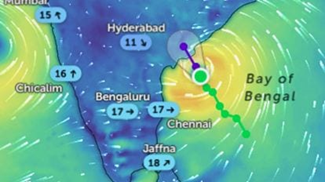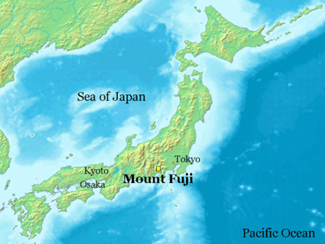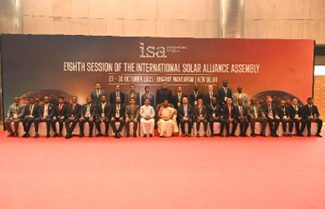Indian Polity
Central Pay Commission:
-
- Context: Centre approves terms of 8th Central Pay Commission.
- The Union Cabinet has approved the Terms of Reference of the eighth Central Pay Commission (CPC), the body in charge of deciding the pay structure and retirement benefits of Union government employees.
- The Commission will comprise one chairperson, one part-time member and one member-secretary.
- Set up by the Government of India periodically to review and recommend changes in the salary structure, allowances, and pensions of Central Government employees.
- Establishment: The First CPC was constituted in 1946; the Eighth CPC (2025) is the latest.
- Frequency: Usually formed every 10 years.
- Recommendations: Include fitment factor, pay matrix, grade pay, and allowance structure.
- Implementation: Recommendations are advisory, and final decisions are taken by the Union Cabinet.
- Coverage: Applies to Central Government employees, armed forces personnel, and pensioners.
(TH)
Geography, Mapping, Ecology & Environment
Cyclone Montha:
-
- It developed over the southeast Bay of Bengal and was identified by the India Meteorological Department (IMD) as a “severe cyclonic storm” before landfall.
- Landfall is expected (or began) on the east coast of India near Kakinada (between Machilipatnam and Kalingapatnam) in the state of Andhra Pradesh.
- Maximum sustained winds at landfall were forecast at around 90–100 km/h, with gusts up to ~110 km/h.
- Large swathes of eastern and southern India were under heavy rainfall alerts, especially coastal Andhra Pradesh, Odisha, Telangana and adjoining regions.
- At least one fatality was reported after the storm made landfall, and there is damage to crops, power lines, and infrastructure in affected states.
- The name “Montha” was submitted by Thailand, and it means something like “beautiful flower” / “fragrant flower”.

(TH)
Cloud-seeding:
-
- A weather modification technique to induce or enhance rainfall by dispersing substances like silver iodide, sodium chloride, or dry ice into clouds.
- Purpose: Used to increase precipitation, reduce drought, disperse fog, or control hail.
- Process: The particles act as condensation nuclei, encouraging water droplets to form and grow until they fall as rain.
- Limitations: Works only if suitable clouds already exist; results are uncertain and localized.
- India Context: Trials have been conducted in Maharashtra, Karnataka, Tamil Nadu, and Himachal Pradesh during drought years, and recently in Delhi.
- Environmental Concern: Possible impacts on air and soil quality due to chemical use, though generally considered minimal.
(TH)
Mount Fuji:
-
- It is located on the Honshu Island, Japan, about 100 km southwest of Tokyo.
- Type: Stratovolcano (composite volcano), formed by successive layers of lava and ash.
- Height: About 3,776 meters, highest peak in Japan.
- Status: Active volcano, last erupted in 1707 (Hōei eruption).
- Cultural Significance: Considered sacred in Shinto and Buddhist traditions; a UNESCO World Heritage Site (2013).
- Geological Context: Lies on the Pacific Ring of Fire, where several tectonic plates meet — Philippine Sea, Eurasian, and Pacific plates.

(TH)
Important data/facts
Disaster management
Disasters in the Himalayas are only increasing:
-
- Of the 687 disasters that the country experienced between 1900 and 2022, as many as 240 were in the Himalayas, according to a 2024 Down To Earth (DTE) report. They include glacial lake outbursts, landslides, floods, wildfires, and earthquakes. Between 1902 and 1962, the region recorded just five disasters.
- Quoting NASA’s landslide data, DTE said the region experienced 1,121 landslide events between 2007 and 2017.
- The recent glacier-collapse/debris flow at Blatten village in the Swiss Alps was prevented from exploding into a humanitarian crisis when a shepherd called the downstream village, saving hundreds of lives.
- A study published last year in the journal Climate Change predicted that 90% of the Himalayas will experience drought lasting over a year if global warming increases by 3°C.
(TH)
Miscellaneous
President Droupadi Murmu’s Speech at ISA Assembly (Oct 28, 2025):
-
- The International Solar Alliance (ISA) is a symbol of the global aspiration to use solar energy for inclusion, dignity, and collective prosperity.
- India is taking determined and urgent steps to combat climate change and promotes clean energy for social equity and empowerment, especially in remote areas.
- The President urged ISA member countries to link solar energy progress with job creation, women’s leadership, rural livelihoods, and digital inclusion, not just infrastructure growth.
- Solar adoption should preserve ecological balance; environmental conservation must be core to green energy expansion.
- The assembly’s collective decisions should ensure inclusive and equitable solar development for present and future generations globally.

(PIB)
PRACTICE MCQ’S
Q1. With reference to the International Solar Alliance (ISA), consider the following statements:
1. The ISA is a treaty-based intergovernmental organization launched by India and France at COP21 in 2015.
2. One of the primary goals of ISA is to mobilize more than USD 1000 billion of investment in solar energy by 2030.
3. India is the first country to host the ISA’s headquarters.
Which of the statements given above is/are correct?
(a) 1 and 2 only
(b) 2 and 3 only
(c) 1 and 3 only
(d) 1, 2 and 3
Answer: D
Explanation:
The ISA was launched jointly by India and France at COP21 (Paris, 2015); it is treaty-based and headquartered in India.
ISA aims to mobilize more than USD 1000 billion for solar energy by 2030.
India hosts ISA headquarters, making it the first international organization headquartered in India.
Q2. With reference to Cyclone Montha, consider the following statements:
1. Cyclone Montha originated over the southeast Bay of Bengal.
2. It made landfall along the Andhra Pradesh coast.
3. The name Montha was given by Thailand.
4. It was classified by the IMD as an Extremely Severe Cyclonic Storm at landfall.
Which of the statements given above are correct?
a) 1 and 2 only
b) 1, 2 and 3 only
c) 2, 3 and 4 only
d) 1, 3 and 4 only
Answer: B
Explanation:
Cyclone Montha developed over the southeast Bay of Bengal, made landfall near Kakinada (Andhra Pradesh coast), and its name was contributed by Thailand. It was categorized as a Severe Cyclonic Storm, not an Extremely Severe Cyclonic Storm.
Q3. With reference to Cloud Seeding, consider the following statements:
1. Cloud seeding involves dispersing substances like silver iodide or sodium chloride into clouds to induce rainfall.
2. It can be used even in completely clear skies to generate new clouds and rainfall.
Which of the statements given above is/are correct?
a) 1 only
b) 2 only
c) Both 1 and 2
d) Neither 1 nor 2
Answer: A
Explanation:
Cloud seeding can enhance rainfall only when clouds already exist; it cannot create clouds in clear skies.
Q4. With reference to Mount Fuji, consider the following statements:
1. Mount Fuji is an active stratovolcano located on Honshu Island in Japan.
2. It was inscribed as a UNESCO World Heritage Site for its cultural significance.
3. The last recorded eruption of Mount Fuji occurred in the 20th century.
Which of the statements given above are correct?
a) 1 and 2 only
b) 2 and 3 only
c) 1 and 3 only
d) 1, 2 and 3
Answer: A
Explanation:
Mount Fuji is an active stratovolcano and a UNESCO cultural site, but its last eruption occurred in 1707 (18th century), not in the 20th century.
Q5. Which one of the statements given above is incorrect with reference to the Central Pay Commission (CPC)?
a) The first Central Pay Commission was constituted in 1946.
b) The recommendations of the Commission are binding on the Government of India.
c) The Commission reviews pay and pension structures of Central Government employees and defence personnel.
d) The Central Pay Commission is generally set up once every ten years.
Answer: B
Explanation:
The recommendations of the Central Pay Commission are not binding; they are advisory in nature, and the Union Cabinet takes the final decision on their implementation.
Spread the Word
